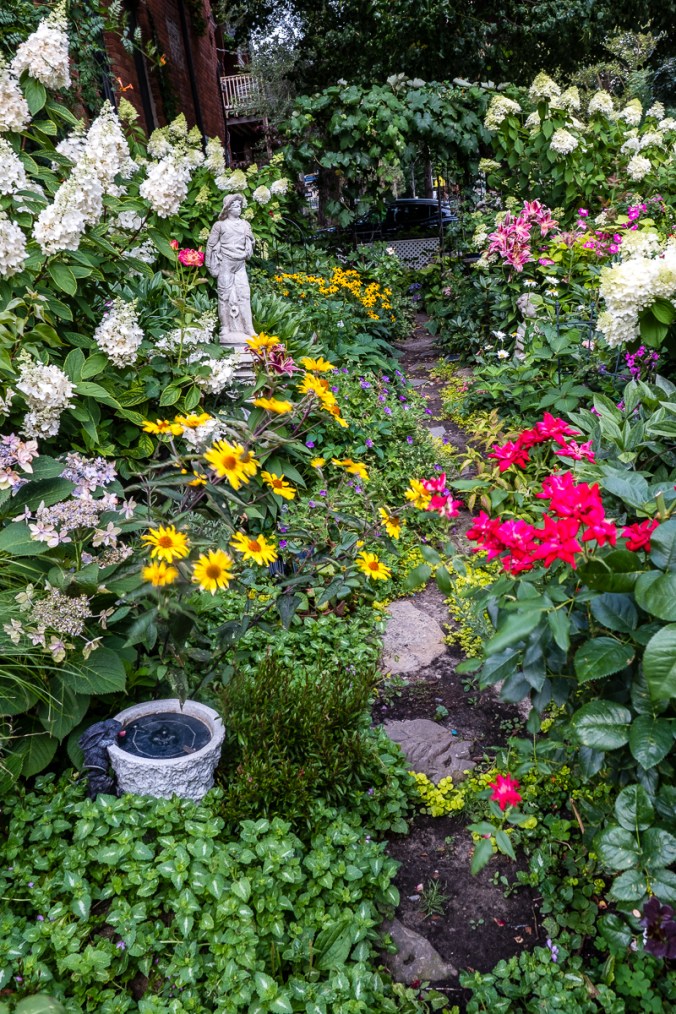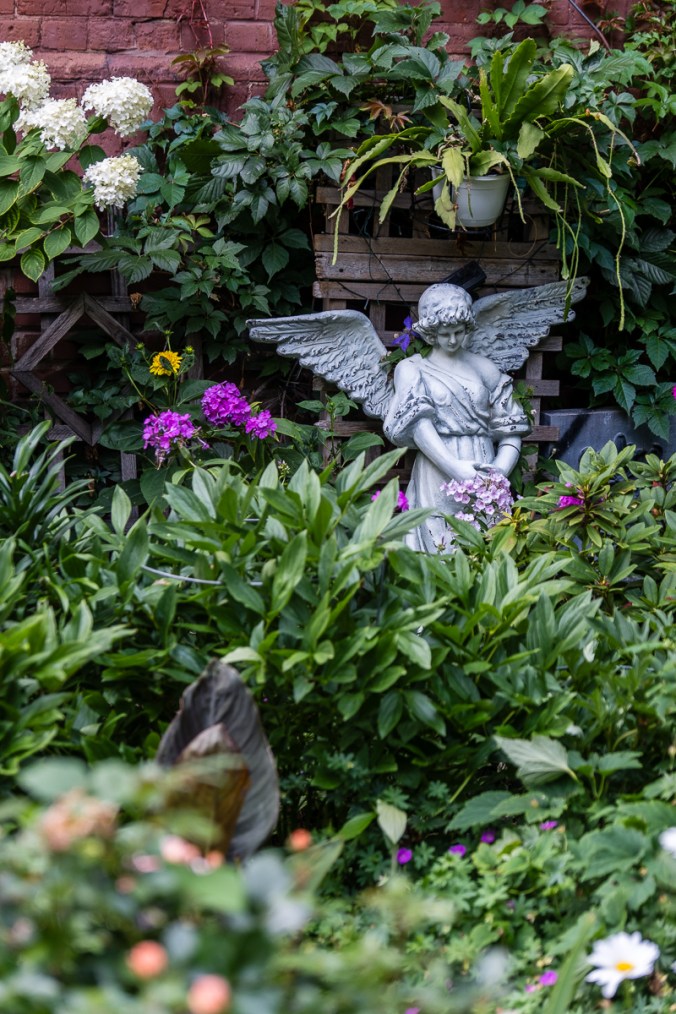Nestled in the west section of Nathan Phillips Square near City Hall are two significant Toronto memorials: The Toronto Peace Garden and The Toronto Spirit Garden.
The Toronto Peace Garden
At the height of the Cold War, when fears of nuclear war were breaking out between the former Soviet Union and the west, the City of Toronto declared itself a nuclear weapon-free zone. To that end, the City created a Peace Garden which was dedicated by Pope John Paul II in Nathan Phillips Square in 1984. The Peace Garden measured 1800 square-feet, costing $540,000 to build in 1984.
From 2010 to 2016, the Peace Garden was closed during renovations of Nathan Phillips Square. On August 7th, 2010 the Peace Garden was decommissioned and moved from its previous location near the doors of Toronto City Hall to its current location, the west side of Nathan Phillips Square.
The current 6,500 square-foot garden consists of a pavilion, a fountain, and surrounding plantings. The site’s gazebo is a stone-clad cube with arched openings on all sides, capped with a pitched roof. One corner of the structure’s corner is deconstructed to signify conflict and the fragility of civilization.

The fountain’s pool encroaches into the gazebo’s removed corner, with an eternal flame placed in the water so that it appears to support the pavilion structure, symbolizing hope and regeneration.









The Toronto Spirit Garden
As you walk along the Peace Garden, it seamlessly morphs into the Toronto Spirit Garden. The Spirit Garden is a 20,650 square-foot Indigenous cultural space that provides teaching, learning, sharing and healing experiences for the
Indigenous community of Toronto, the City’s diverse citizens, newcomers and visitors.
The design of the Spirit Garden revolves around Turtle Island, and offers dedicated places for contemplation, celebration, and ceremonies – open, inclusive and welcoming to all.
The project responds in part to the Truth and Reconciliation Commission of Canada Call to Action 82, for government to commission and install a Residential Schools Monument in each capital city to honour residential school survivors, and all the children lost to their families and communities.
Teaching Lodge
This unusual-looking building is the Teaching Lodge. The Teaching Lodge is a pre-formed laminated Ash wood structural frame enclosed with a white cedar tongue and groove exterior enclosure and sheathing. Operable skylights provide ventilation, and the space is secured with doors located at the east and west entrances to the lodge. The interior features built-in seating for approximately 60 people.
The Lodge reinforces the importance of family, represents life’s journey and serves as a spiritual home for all First Nations peoples.


Three Sisters
Artwork is etched onto Muntz metal panels depicting the symbiotic relationship that exists between corn, beans and squash, and the shared values associated with stewardship of the land and planning for the seventh generation. The story is a model for “how to be a woman in the world”. Women are teachers, life givers and support each other, they work with the ground (Earth).




Spirit Canoe
The Spirit Canoe is a 36-foot-long stainless-steel sculpture with laser-cut artwork and painted infill panels. The canoe is a tribute to the Métis Voyageur tradition, representing resilience, collaboration and the connection of the Métis people to land and waterways.


Turtle Sculpture
At the heart of the Spirit Garden stands a six-foot-tall limestone turtle sculpture, composed of 10 individual pieces and weighing approximately 10 tonnes. Positioned within a reflecting pool and aligned with Magnetic North, the turtle represents Turtle Island – Mother Earth – embodying First Nations creation stories.


The names of 18 residential schools that once operated in Ontario are displayed in stainless steel lettering on the pool’s north wall:

Inuksuk
The Inuksuk is a traditional stone landmark, standing five-feet-tall and stacked in the Spirit Garden on a raised plinth. It serves as a cultural marker and symbol of guidance for Inuit peoples, representing safety and reassurance on the land.



Text References
City of Toronto
Toronto Council Fire Native Cultural Centre




































































































































Yes, it needed To go. I lived nearby and would pass this hospital many times over the years. Looking forward…